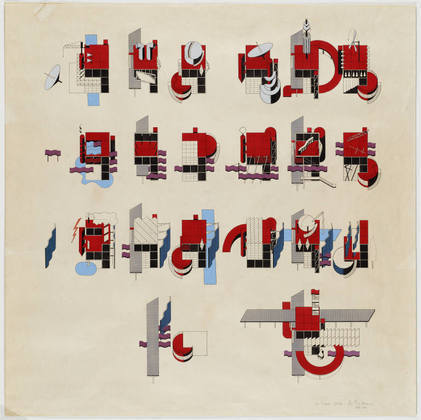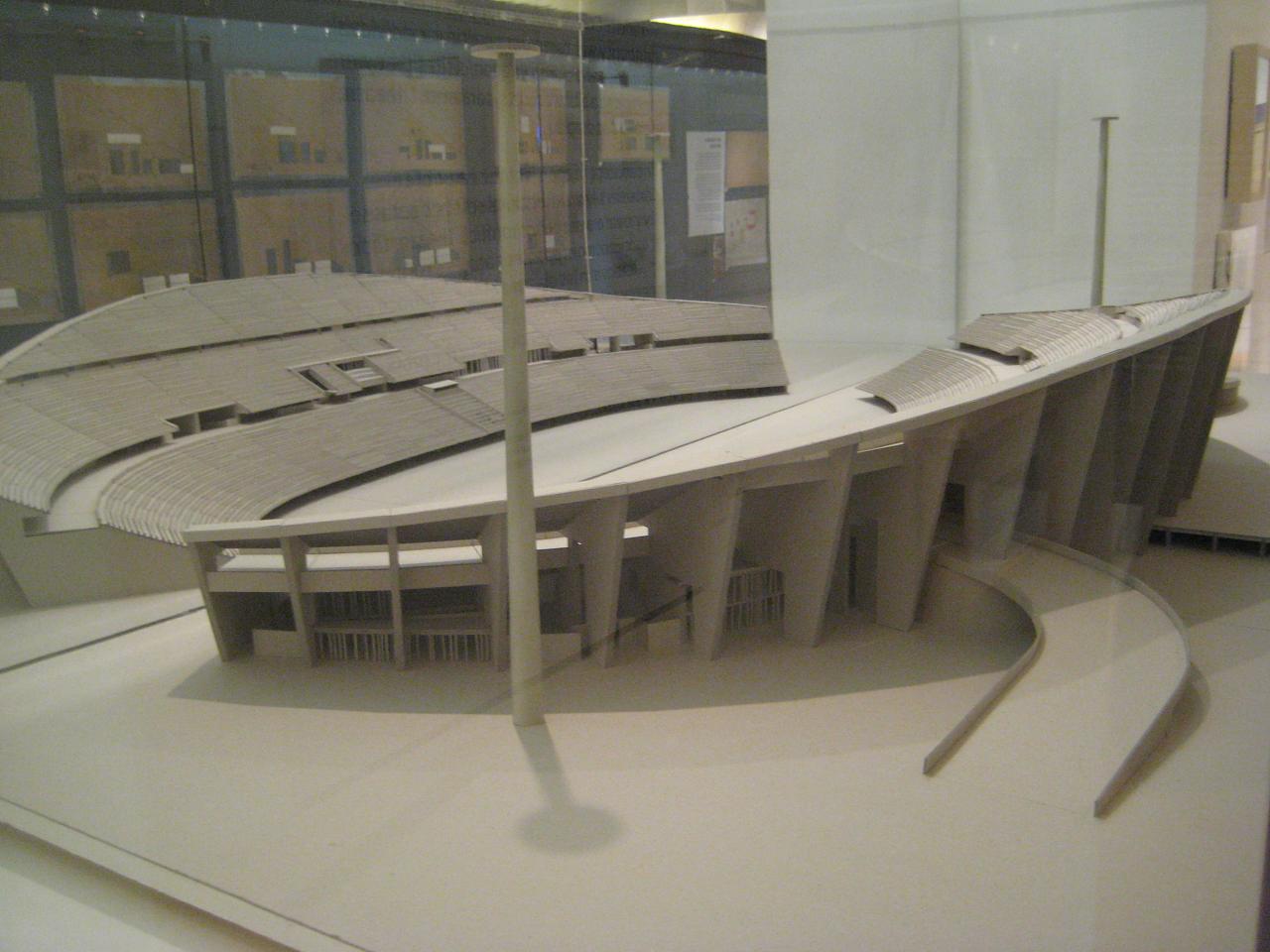
29 October 2010
28 October 2010
Hydro Power Invention - Overview
Hydro Power Invention - Overview: "
"
3D model by AENews | Full overview of Sarfraz Ahmad's hydro power invention. In theory these hydro plants would not require a reservoir and would have a minimal impact on the environment. |
Blog Posting
All,
Please post your sketches and diagrams from the many drawings you already have. This is all background data to satisfy the criteria outlined in the last posting. Photos of your models would also be a nice addition. Look back at the studio outline for the number of "sheets" that you are required to present in your "book" at the end of the semester.
You should tag each post at the bottom right with your name. This makes the blog work like the "book" for your individual work. Please start today so it doesn't interfere with your ongoing research.
RC
Please post your sketches and diagrams from the many drawings you already have. This is all background data to satisfy the criteria outlined in the last posting. Photos of your models would also be a nice addition. Look back at the studio outline for the number of "sheets" that you are required to present in your "book" at the end of the semester.
You should tag each post at the bottom right with your name. This makes the blog work like the "book" for your individual work. Please start today so it doesn't interfere with your ongoing research.
RC
At the end of Design 7...
When a problem is properly stated, in our epoch, it inevitably finds its solution.
– Le Corbusier, Towards a New Architecture, 1923
If programming is problem seeking, the design is problem solving.
- William Pena, Problem Seeking, 1973
Deep Planning is architecture at its least autonomous; the information at its basis must be gleaned from other fields of expertise, the goal is not a design proposal but the visualization of a development policy.
– UNStudio, UNFold, 2002
Pre-Design can be very briefly defined as the setting of project parameters. What are the parameters and pieces of information that should influence the development of a project? Pre-Design seeks to uncover these facts and factors, slowly giving them form and meaning in the making of architecture.
One component of pre-design can be defined as site analysis and selection. Site analysis will include many things, such as climate-related analyses, zoning considerations, and socio-cultural value to the constituents involved. It is not enough to simply select a site, the site must be understood on historical, environmental, and spatial-formal levels. It must be researched in terms viability to the proposed program. Programming, another component of pre-design, is as much about the relationship of one space to another as it is about the square footage. Programming should research time and user based programming scenarios, not just singular, linear relationships. Programming includes the identification and design of the necessary circulation, and the possibility for hybrid uses of space that change daily or annually.
The relationship between all these factors is not to be understood as linear. Many of you will begin with a site, others with program, and others with something altogether different. Pre-design is ultimately about generating and investigating alternatives based on the analysis. Alternatives should be described in a comparative and evaluative way, so that it is easy to understand strengths and weaknesses of each alternative. Alternate sites should be evaluated for viability, and alternate program.
Pre-design: the ability to prepare a comprehensive program for an architectural project, such as preparing an assessment of client and user needs, an inventory of space and equipment requirements, an analysis of site conditions (including existing buildings), a review of the relevant laws and standards and assessment of their implications for the project, and a definition of site selection and design assessment criteria.
– NAAB Pre-design Criteria, 2010
Requirements
At the end of Design 7, you should have a set of diagrams, clearly labeled according to the topics listed below, that are part of your final presentation and booklet. They must clearly articulate the following:
- Site analysis: Climate, location, natural and man-made systems, historical development, zoning parameters, and the socio-economic and political forces that influenced them.
- Project constituents: Identify user groups, their interactions, and their desired programs. Create a matrix (or similar type) of user relationship diagram that can begin to show alternatives for programming.
- Programming: Initial diagrams will show alternative spatial relationships between functions, while more developed programs will specifically define scale and proportion of these program pieces.
- Precedent: show analysis (not just scanned images) that describe how you extracted critical research information from your precedents.
For each topic above, collect pertinent data and spatial information, and use it to generate alternatives comparatively evaluate each. As part of the comparative evaluation, list the pros and cons of each alternative as related to your established criteria. Data or references used to quantify the analysis must be cited. If you are sizing a theater according to guidelines in Graphic Standards, cite it. If you are addressing a certain group in a population based on census data, cite that source.
Important: Simply regurgitating images from google maps or climate data websites will not meet the requirements of site analysis, in the same way that a simple list of program square footage with boxes of area is not enough to satisfy programming requirements. Pre-design drawings, diagrams, and models synthesize data collected and alternatives tested into your own graphic language.
The images included in a powerpoint file at the following location are examples of documentation that would satisfy the Pre-Design requirement: http://iris.nyit.edu/~maltwick/THESIS/predesign.ppt. Your professor will refine the above list of requirements with you to synchronize it with the requirements of the studio.
Everyone MUST review!
Please thank Prof. Altwicker for this fantastic set of images and diagrams.
Altwicker - Pre-Design requirement PowerPoint
Altwicker - Pre-Design requirement PowerPoint
27 October 2010
26 October 2010
Pitch Africa, Atopia Research, world architecture news, architecture jobs
from Jonathan Friedman:
Pitch Africa, Atopia Research, world architecture news, architecture jobs
this might be of interest to Ronnie, your Quito planner...
I also have something for the multifaith project...
Jon
Pitch Africa, Atopia Research, world architecture news, architecture jobs
this might be of interest to Ronnie, your Quito planner...
I also have something for the multifaith project...
Jon
25 October 2010
There’s Still a Farm at Indiana Development
Michigan Land Use Institute: "There’s Still a Farm at Indiana Development
Jing: MVRDV housing project
http://www.galinsky.com/buildings/wozoco/index.html
24 October 2010
Midterm notes
Viet-
What is major massing/program?
Do you have a consistent set of 3d volumes that will have specific requirements?
What attitude is the hospital taking for its patients?
Alina-
Sections through current dams?
What are the bridges connecting?
What are community conditions?
Ronny-
Sun & wind diagrams
City as a spine
Sari/Corb studies of urbanism
Amanda-
What are some architectural precedents?
Who are the faculty, how many are there and what is their role?
George-
What is the architectural proposal from your analysis?
Palladio villas
FLW prairie house.
Jing-
What are the removed spaces going to be when unoccupied.
Assign program to legos.
Habitat 67.
Carlos-
I was plotting during your review and only caught the end question, a question that i think was only asked to you so bluntly...
What is the thesis?
23 October 2010
22 October 2010
20 October 2010
Reviews
All,
Lets be sure to be ready at 2:20 on Friday. So far - so good, but we need more models!!
Everyone take notes - we will post them to the blog.
Also, see link to Readings on the right side. I'll add as they come up in studio or at reviews.
See you Friday.
Lets be sure to be ready at 2:20 on Friday. So far - so good, but we need more models!!
Everyone take notes - we will post them to the blog.
Also, see link to Readings on the right side. I'll add as they come up in studio or at reviews.
See you Friday.
14 October 2010
13 October 2010
Bâtiments de l'écluse, Kembs-Niffer, France, 1960
Fondation Le corbusier - Buildings: "- Sent using Google Toolbar"
A climate science recommendation, the Pakistan floods, and, of course, sand - Through The Sandglass
A climate science recommendation, the Pakistan floods, and, of course, sand - Through The Sandglass: "- Sent using Google Toolbar"
The Engineering Failures behind the Pakistan floods | Climate Himalaya Initiative
The Engineering Failures behind the Pakistan floods | Climate Himalaya Initiative: "- Sent using Google Toolbar"
01 October 2010
Subscribe to:
Comments (Atom)







































